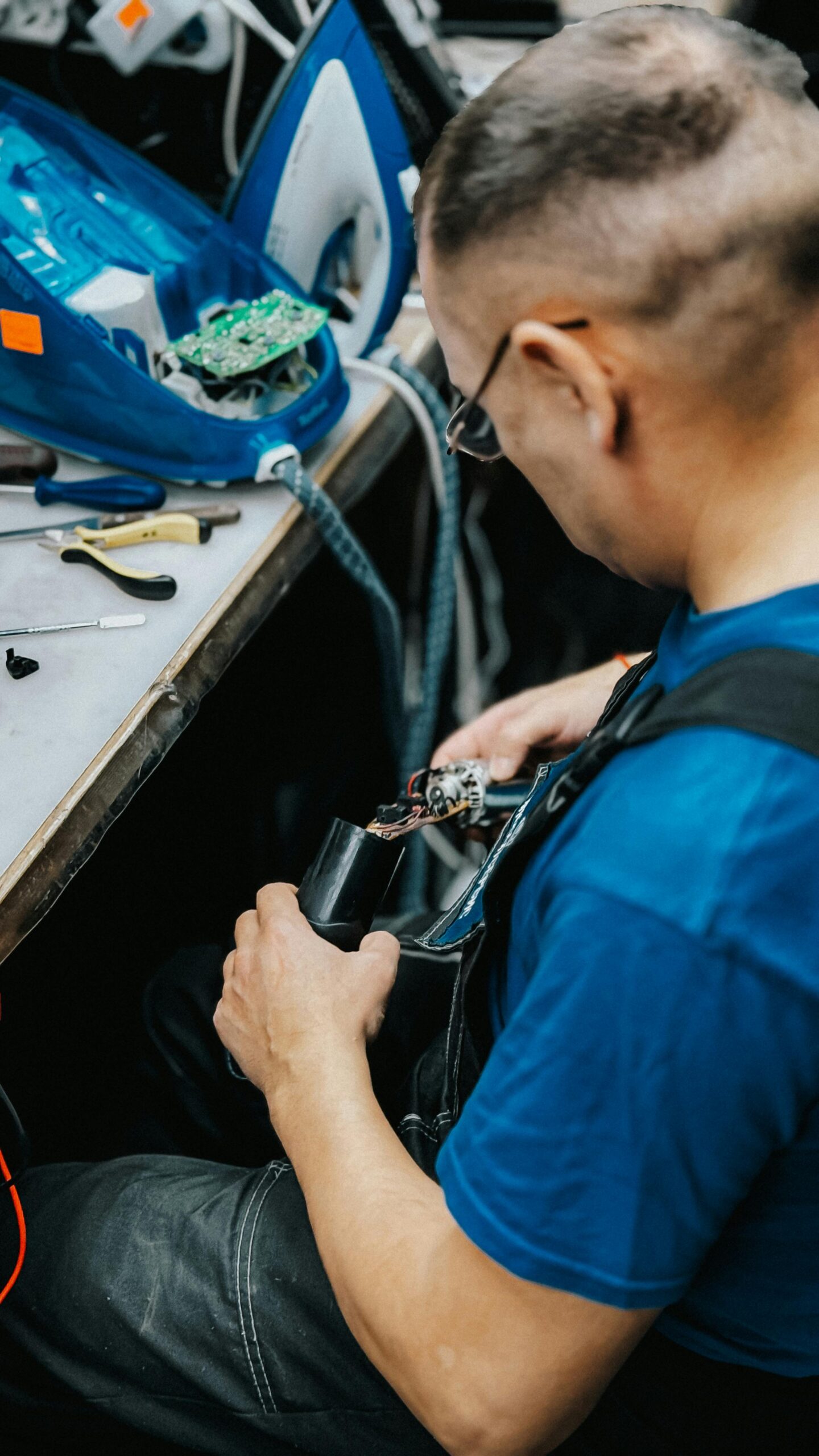Troubleshooting Windows 11 device compliance can be a daunting task for both novices and tech enthusiasts alike. With its sleek design and advanced features, Windows 11 aims to enhance user experience, but compliance issues can hinder performance and productivity. Are you facing frustrating errors that prevent your device from meeting compliance standards? You’re not alone! In this article, we will explore practical solutions to unlock seamless performance and ensure your Windows 11 device operates at its full potential.
When it comes to Windows 11 compliance troubleshooting, understanding the root causes of common issues is essential. Many users encounter problems due to outdated drivers, incorrect settings, or even conflicts with third-party applications. But worry not! We’ll provide you with step-by-step guides to identify these issues and rectify them quickly. Whether you’re dealing with device management policies, security settings, or connectivity troubles, our insights will empower you to take control of your system.
Additionally, we will delve into the latest trends and updates related to Windows 11 compliance, ensuring you’re equipped with the most current information. Have you ever wondered how to optimize your device for better performance? What if you could enhance your system’s security while also meeting compliance requirements? Join us as we unravel the complexities of Windows 11 device compliance, offering tips and tricks that will boost your confidence and keep your system running smoothly. Get ready to troubleshoot like a pro and enjoy a seamless Windows 11 experience!
7 Essential Tips to Ensure Windows 11 Device Compliance for Optimal Performance

Windows 11 has become the go-to operating system for many users, bringing a bunch of new features and improvements. However, ensuring your device runs smoothly and stays compliant can sometimes be challenging. If you want to achieve optimal performance, it’s crucial to understand some key tips. Here’s a guide that helps you troubleshoot Windows 11 device compliance and unlock seamless performance with these 7 essential tips.
1. Keep Your System Updated Regularly
One of the most important aspects of maintaining compliance is keeping your system updated. Windows 11 often releases updates that fix bugs and improve security. You should check for updates at least once a week. To do this, go to Settings, then Windows Update, and click Check for updates. Ignoring updates can lead to poor performance.
2. Manage Your Storage Efficiently
Every device has a limited amount of storage. If your storage is nearly full, it can slow down your device. Windows 11 has a built-in storage sense feature that can help you manage your files better. You can enable it by going to Settings, then System, and Storage. It can automatically delete temporary files that are no longer needed. You should consider removing old files and uninstalling unused applications regularly.
3. Optimize Startup Programs
Too many applications starting up at boot can slow down your PC. You can manage startup programs through Task Manager. Press Ctrl + Shift + Esc to open Task Manager, then go to the Startup tab and disable non-essential programs. This can significantly speed up your boot time.
4. Check for Malware Regularly
Malware can severely affect your system’s performance and compliance. Running regular scans with Windows Defender can keep your device secure. Moreover, consider using additional antivirus tools for extra protection. It’s better to be safe than sorry, right?
5. Adjust System Settings for Performance
Windows 11 allows users to adjust settings for better performance. You can go to Settings, then System, and choose Performance Options. Here, you can select “Adjust for best performance.” This may reduce visual effects but enhances speed. This is crucial, especially if you are using older hardware.
6. Utilize Disk Cleanup
Running Disk Cleanup regularly helps in freeing up space and optimizing performance. You can search for Disk Cleanup in the Start menu. Select the drive you want to clean, then check the boxes for file types you want to delete. Temporary files, system error memory dump files, and more can be safely removed without affecting performance.
7. Monitor Resource Usage
Understanding how your resources are being used is vital for troubleshooting. You can use Task Manager to see which applications are using the most CPU, memory, and disk resources. If certain apps are consistently using too much, consider alternatives or limit their background activity.
In summary, keeping your Windows 11 device compliant and running optimally involves several proactive measures. Regular updates, efficient storage management, and performance adjustments can help. Monitor your system’s resource usage and address potential threats like malware promptly. These practices not only enhance performance but also contribute to a smoother user experience. By making these small adjustments, you can ensure that your device runs at its best, saving you time and frustration in the long run. Whether you’re working, gaming, or just browsing, a compliant Windows 11 device makes every task easier.
Common Windows 11 Device Compliance Issues: How to Identify and Resolve Them Fast

In the fast-paced world of technology, Windows 11 has revolutionized how users interact with their devices. However, as more people adopt this operating system, it is crucial to be aware of common Windows 11 device compliance issues. These problems can lead to frustrating experiences, but identifying and resolving them quickly can unlock seamless performance.
Common Windows 11 Device Compliance Issues
Many users will face compliance issues when upgrading or installing Windows 11. Some of the most common issues include:
- Hardware Compatibility: Not all devices meet the strict hardware requirements for Windows 11. This can cause error messages or poor performance.
- Driver Issues: Outdated or incompatible drivers can lead to system crashes or functionality problems.
- Security Settings: Windows 11 has enhanced security features. If these settings are not configured correctly, it may cause compliance issues.
- Group Policy Conflicts: In corporate environments, group policy settings can cause devices to not comply with the requirements set by the organization.
Identifying Compliance Problems
To troubleshoot Windows 11 device compliance issues, first, you need to identify them. Here are some steps you can take:
- Check the PC Health Check Tool: Microsoft provides a tool that checks if your device is ready for Windows 11. Run this tool to see if your hardware meets the requirements.
- Review Device Manager: Look for yellow exclamation marks next to any drivers. This indicates potential issues that need addressing.
- Audit Security Settings: Ensure that security features like TPM (Trusted Platform Module) and Secure Boot are enabled in your BIOS settings.
- Use the Windows Event Viewer: This tool can show you logs about application errors and system warnings, helping identify compliance issues.
Troubleshooting Windows 11 Device Compliance
Once you’ve identified the issues, you can start troubleshooting. Here are some effective strategies:
- Update Drivers: Go to Device Manager, right-click on devices with issues, and select “Update driver.” It is often a quick fix.
- Adjust Security Settings: If security settings are too strict, you may need to adjust them in the Windows Security app. Ensure they align with your organizational policies if in a corporate environment.
- Check BIOS Settings: Sometimes, outdated BIOS can create compliance headaches. Make sure your BIOS is updated to the latest version.
- Reset Group Policy Settings: If you suspect that group policies are conflicting, you may need to reset them using the Command Prompt with the command “gpupdate /force”.
Quick Fixes for Common Problems
Here is a quick list of actions to take based on specific issues:
- Incompatibility Issues: If your hardware isn’t compatible, consider upgrading components like RAM or storage, or even purchasing a new device.
- Driver Failures: Use Windows Update or the manufacturer’s website to find the latest drivers for your hardware.
- Security Configurations: For security settings, sometimes a simple restart can resolve minor configuration issues.
Practical Example
Imagine you’re facing a compliance issue with a device that has been running Windows 10 flawlessly. After upgrading to Windows 11, you notice it’s sluggish. By following the steps above, you discover outdated drivers are causing the slow performance. Updating them resolves the issue, showcasing how crucial it is to stay on top of driver updates.
Managing Windows 11 device compliance is essential for optimal performance. With a few simple steps, you can identify and resolve common issues quickly. This proactive approach ensures that your devices run smoothly and efficiently, providing a seamless experience tailored to your needs. Always remember, staying informed and vigilant about updates will help you navigate the challenges of modern operating systems.
The Ultimate Guide to Troubleshooting Windows 11: Boost Your Device Compliance Today

Windows 11 is the latest operating system from Microsoft and it comes with a bunch of new features and enhancements, but it also brings its own set of challenges, particularly when it comes to device compliance. Navigating these issues can be a bit tricky, but don’t worry! This guide is aimed to help you troubleshoot Windows 11 device compliance and unlock seamless performance. You can boost your device compliance today with just a few simple steps.
Understanding Device Compliance in Windows 11
Device compliance is a term that refers to how well your device meets the requirements set by Windows 11. This might include hardware specifications, security settings, and other configurations that ensure your system runs smoothly and securely. If your device isn’t compliant, it might face issues like poor performance, security vulnerabilities, or even software incompatibility. Here are some common factors that influence device compliance:
- Hardware Requirements: Windows 11 has specific hardware requirements like TPM 2.0, Secure Boot, and certain CPU types.
- Software Updates: Keeping your system updated with the latest patches and updates is essential.
- Security Settings: Ensuring that your security settings are enabled, like Windows Defender and firewall protections.
Troubleshooting Steps for Windows 11 Device Compliance
When you run into compliance issues, it can be frustrating. However, following these steps can often help you find a resolution:
-
Check System Requirements: First things first, make sure your device meets all the necessary hardware requirements for Windows 11. You can find a list of these requirements on Microsoft’s official website.
-
Run Windows Update: Outdated software can lead to compliance issues. Head to Settings > Update & Security > Windows Update and check for updates. Install any pending updates, and restart your device.
-
Verify TPM and Secure Boot: To check if TPM is enabled, press Win + R, type “tpm.msc”, and hit Enter. If it shows “The TPM is ready for use,” then you’re good to go. For Secure Boot, reboot your system and enter BIOS settings to enable it if it’s disabled.
-
Adjust Security Settings: Make sure that Windows Defender and your firewall are active. You can check these in the Windows Security app.
-
Use the Windows Troubleshooter: Windows has built-in troubleshooters that can help you identify issues. Go to Settings > System > Troubleshoot, and run the appropriate troubleshooters.
Common Compliance Issues and Their Solutions
Here’s a quick list of common issues and fixes:
-
Issue: Device does not support TPM 2.0
Solution: Upgrade your motherboard or enable TPM in BIOS. -
Issue: Secure Boot not enabled
Solution: Access BIOS and enable Secure Boot option. -
Issue: Outdated drivers
Solution: Visit your manufacturer’s website to download the latest drivers. -
Issue: Windows updates failing
Solution: Use the Windows Update Troubleshooter to identify problems.
Conclusion
Troubleshooting Windows 11 device compliance can seem overwhelming, but by following these steps, you can significantly improve your device’s performance and security. Remember to regularly check for updates and keep your system settings in line with the requirements. By being proactive, you can prevent many compliance issues before they arise, ensuring a smoother and more efficient Windows 11 experience. Don’t hesitate to seek help from forums or tech support if you need further assistance. Ultimately, a little effort in troubleshooting goes a long way in unlocking the full potential of your Windows 11 device!
Are You Experiencing Windows 11 Compliance Errors? Discover Key Fixes and Insights

Are you facing Windows 11 compliance errors? If your device is struggling to meet the compliance standards set by Microsoft, you’re not alone. Many users in New York and beyond are experiencing these frustrating issues. Let’s dive into some key fixes and insights to help you troubleshoot Windows 11 device compliance, unlocking seamless performance along the way.
Understanding Windows 11 Compliance Errors
Windows 11 has stricter compliance requirements compared to its predecessors. These errors can occur for various reasons, such as outdated drivers, incorrect settings, or even hardware limitations. Knowing what causes these compliance issues is crucial for effective troubleshooting.
Common Causes of Compliance Errors:
- Outdated system drivers
- Enablement of certain Windows features
- Hardware incompatibility
- Security settings that are too strict
- Incomplete or missing updates
Key Fixes to Troubleshoot Windows 11 Compliance
Here are some effective solutions to help you address those pesky compliance errors:
-
Update Your Drivers:
- Check for updates from the device manager.
- Use manufacturer websites for the latest drivers.
-
Verify System Requirements:
- Ensure your device meets the minimum requirements for Windows 11.
- Check processor, RAM, and TPM version.
-
Adjust Security Settings:
- Sometimes, strict security settings can trigger compliance errors.
- Consider relaxed settings temporarily to see if that resolves the issue.
-
Run Windows Update:
- Keeping Windows up to date is vital.
- Go to Settings > Update & Security > Windows Update and check for updates.
-
Use the Troubleshooter Tool:
- Windows has a built-in troubleshooter for various issues.
- You can find it in Settings > Update & Security > Troubleshoot.
Practical Tips for Smooth Performance
To ensure your device runs smoothly and avoids compliance errors, follow these practical tips:
- Regular Maintenance: Keep your system clean by removing unnecessary files and applications. Use disk cleanup tools to optimize performance.
- Backup Your Data: Before making significant changes, always backup important files. This ensures you will not lose anything crucial.
- Monitor System Health: Regularly check the health of your system using built-in diagnostics tools. It can save you from future headaches.
Resources for Further Help
If you’re still struggling, consider reaching out to support forums or Microsoft’s official support. They can provide additional insights and troubleshooting steps tailored to your specific situation.
Helpful Links:
- Microsoft Support: https://support.microsoft.com
- Community Forums: https://answers.microsoft.com
Final Thoughts
Experiencing Windows 11 compliance errors can be annoying, but with the right approach, you can tackle the issue effectively. By following the steps outlined above, you can troubleshoot your Windows 11 device compliance and enhance your overall computing experience. Don’t let these errors hold you back. Embrace the journey of resolving these issues, and soon enough, you’ll be enjoying a seamless and efficient Windows 11 experience. Remember, the key is to stay informed and proactive in maintaining your device.
Unlocking Seamless Performance: Top 5 Tools to Manage Windows 11 Device Compliance Issues

Navigating through the complexities of Windows 11 device compliance can be daunting. Whether your organization is large or small, ensuring that your devices meet compliance requirements is crucial for maintaining security and performance. In New York, digital license selling e-stores have emerged to provide essential tools that help manage these compliance issues effectively. Here’s a look at the top five tools that can unlock seamless performance and troubleshoot Windows 11 device compliance challenges.
1. Microsoft Endpoint Manager
Microsoft Endpoint Manager integrates services like Intune and Configuration Manager, creating a unified platform for managing devices. Its features allow for remote management, policy enforcement, and compliance reporting. The ability to apply security updates and configurations remotely means organizations can keep devices compliant without the need for physical access.
- Key Features:
- Unified management for both mobile and desktop devices.
- Real-time compliance reporting.
- Integration with Microsoft 365 services.
2. Windows Security
Built directly into Windows 11, Windows Security provides essential protections and compliance tools. It enables users to manage antivirus settings, firewall configurations, and device health. Regular updates to Windows Security ensure that compliance measures are current and comprehensive.
- Benefits:
- Automatically checks for updates and compliance.
- Alerts for potential security threats.
- Easy-to-navigate interface for non-technical users.
3. System Center Configuration Manager (SCCM)
SCCM is a robust tool for managing large groups of devices. It allows IT departments to deploy software, manage updates, and monitor compliance across thousands of devices simultaneously. For Windows 11, SCCM helps ensure that all systems are up to date with the latest compliance standards.
- Advantages:
- Centralized management for multiple devices.
- Detailed reporting and analytics.
- Customizable compliance settings.
4. Patch My PC
Patch My PC is a third-party tool that simplifies the process of keeping applications up to date. It’s particularly useful for organizations that rely on many different software applications. The tool automates the updating process, helping to ensure that all installed software complies with company standards.
- Why Use Patch My PC?
- Reduces the risk of security vulnerabilities from outdated software.
- Saves time for IT teams by automating updates.
- Easy integration with existing management tools.
5. Windows Autopilot
Windows Autopilot streamlines the deployment of new devices and ensures they meet compliance requirements from the first boot. It simplifies the setup process and allows IT administrators to configure devices for users without needing physical access. This can be extremely beneficial for remote work environments.
- Features Include:
- Customizable out-of-the-box experience.
- Automatic enrollment into management systems.
- Simplified device provisioning.
In summary, managing Windows 11 device compliance is essential for ensuring that your organization’s devices function smoothly and securely. These top five tools—Microsoft Endpoint Manager, Windows Security, System Center Configuration Manager, Patch My PC, and Windows Autopilot—offer comprehensive solutions to troubleshoot Windows 11 device compliance issues. They unlock seamless performance by addressing compliance checks, software updates, and device management, so organizations can focus on what truly matters. With the right tools in place, you can confidently navigate the complexities of compliance and keep your devices running optimally.
Conclusion
In conclusion, troubleshooting Windows 11 device compliance is essential for ensuring that your systems align with organizational policies and security standards. Throughout this article, we’ve explored common compliance issues, including outdated drivers, misconfigured settings, and the importance of keeping your operating system updated. We also discussed how leveraging tools like Microsoft Endpoint Manager can streamline the compliance process and enhance device management efficiency. Regularly auditing your devices and adhering to best practices can significantly reduce compliance-related setbacks. As you implement these strategies, remember that proactive monitoring and timely updates are key to maintaining device compliance in a constantly evolving digital landscape. Take action today by reviewing your current device configurations and making necessary adjustments to enhance your compliance posture. Staying ahead of potential issues will not only bolster your security but also improve the overall performance of your Windows 11 environment.

